
Care Partner Series: Incontinence Management
by Guest Author
Mariah Mahotz, BSN, RN, OCN, Nurse Navigator at the Pacific Brain Tumor Center, reviews methods of incontinence management, safe handling if a family member is taking chemotherapy, and more. This is part of a “How To” series for our families, specifically focused on care partners.
What is incontinence?

Incontinence, or the inability to control urinary flow or bowel movement, is a common symptom of aging and cancer therapy. Over 75% of women over the age of 65 experience urinary incontinence (UI). Many cancer treatments, including chemotherapy, may affect bladder function by damaging the muscles and nerves used to control bladder flow.
Knowing the signs of incontinence is the first step to ensuring proper care for your loved one. Symptoms of UI include frequent urination at night, leakage, as well as a weak urine stream, or the feeling that the bladder is never empty, among others.
What is incontinence management?
Incontinence management, or the management of uncontrolled urine flow and bowel movement, is one of the most requested pieces of information for care partners looking after loved ones who have limited mobility from aging or from cancer treatment. While caring for a loved one who is incontinent, it is important to know how to keep them comfortable, but also keep yourself safe.
Before assisting your loved one with incontinence management, take the necessary steps to keep yourself self by wearing gloves. Specifically, if your loved one is undergoing oral chemotherapies, be sure to wear gloves to avoid coming into contact with these fluids which can be excreted through urine or sweat.

If at any time during incontinence management, you notice skin abnormalities on your loved one, such as redness or a new open wound, be sure to call your care team. Skin breakdown is quite common when caring for a bed-bound loved one and may require medical assistance. Skin breakdown occurs when the skin is deprived of regular blood flow, and can lead to open wounds and infection if left untreated.
Note: Many care partner supplies can be provided to you through insurance or your care provider. Be sure to contact your care team if you have any questions about obtaining supplies for the care of your loved one.
Proper Mechanics of Log Roll for a Bed-Bound Patient or Loved One
Logrolling, or the log roll, is a maneuver used to move your loved one without flexing the spinal column. Logrolling is used to change briefs, linens, and bedpans beneath your loved one. In this maneuver, your loved one’s legs are stretched and the head is held to immobilize the neck. Logrolling is best performed with two people to help hold your loved one, but it can be performed by one person if you do not have additional assistance.
Before beginning, identify if your loved has one side that is weaker than the other. If so, you will want to roll them so the dominant side is on top first. This allows your loved one to have a free dominant arm for support. For example, if your loved one has a weak left side, you will roll them to their left with their dominant right shoulder on top.
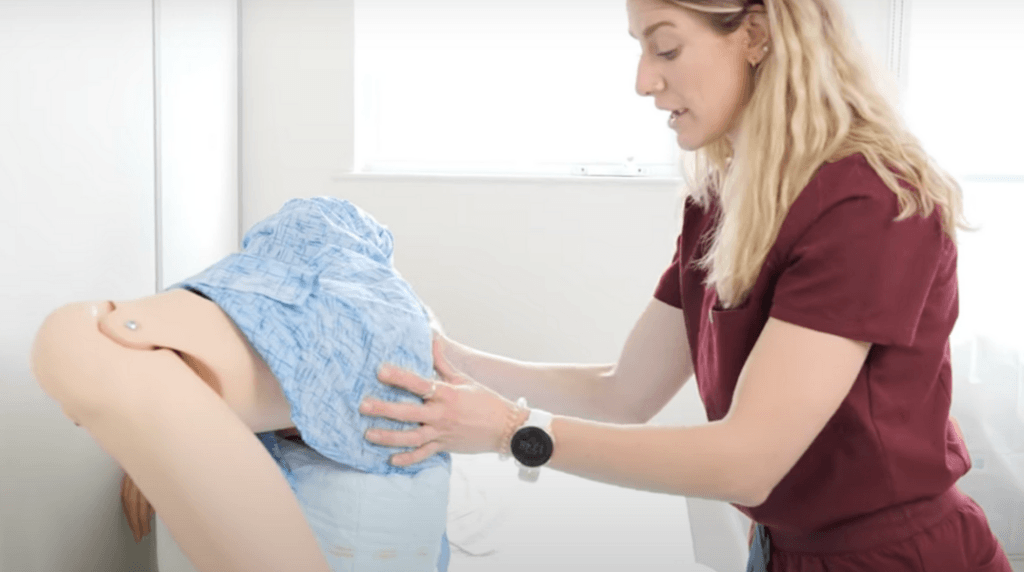
at the Pacific Brain Tumor Center.
NOTE: To avoid moving your loved one back and forth multiple times, plan to work as much as you can on one side before rolling your loved one to the other side.
- Step 1: Place your feet firmly on the ground, shoulder-width apart, in a supportive stance. This will ensure that you are using your legs, not your lower back.
- Step 2: Place your loved one’s dominant arm across their body, followed by their dominant leg, helping them to roll onto their non-dominant side. Once on their side, you will have full access to change a brief or place a bedpan beneath them.
- Step 3: After you are done on the first side, carefully roll your loved one back to the center.
- Step 4: Place your loved one’s non-dominant, or weaker arm around your neck, for support as you roll your loved one to the other side. Once on their side, you should have full access to the other side beneath your loved one to change a brief or place a bedpan.
Changing An Absorbent Brief for a Bed-Bound Patient or Loved One
If your loved one is bed-bound and in a brief, and you know that you will be changing them into a new brief, learn the steps to keep you and your loved one safe. Changing a brief may need to happen between six (6) to eight (8) times a day, depending on the condition of your loved one.
Note: Choosing the correct brief for your loved one depends on their mobility. Briefs, or adult diapers, come in all different shapes and sizes. Winged briefs are the most common option for those with limited mobility. Winged briefs have winged edges that can attach either side of the brief together at the hips. Pull-up briefs are options for more mobile patients. Pull-up briefs slide on and come off by ripping at the sides.
- Step 1: Lay out your new linen (absorbent is best) over the bottom half of your loved one. Next, open up a new brief or adult diaper completely. Lay the brief on top of the new linen, in the position where it would be worn by the loved one.
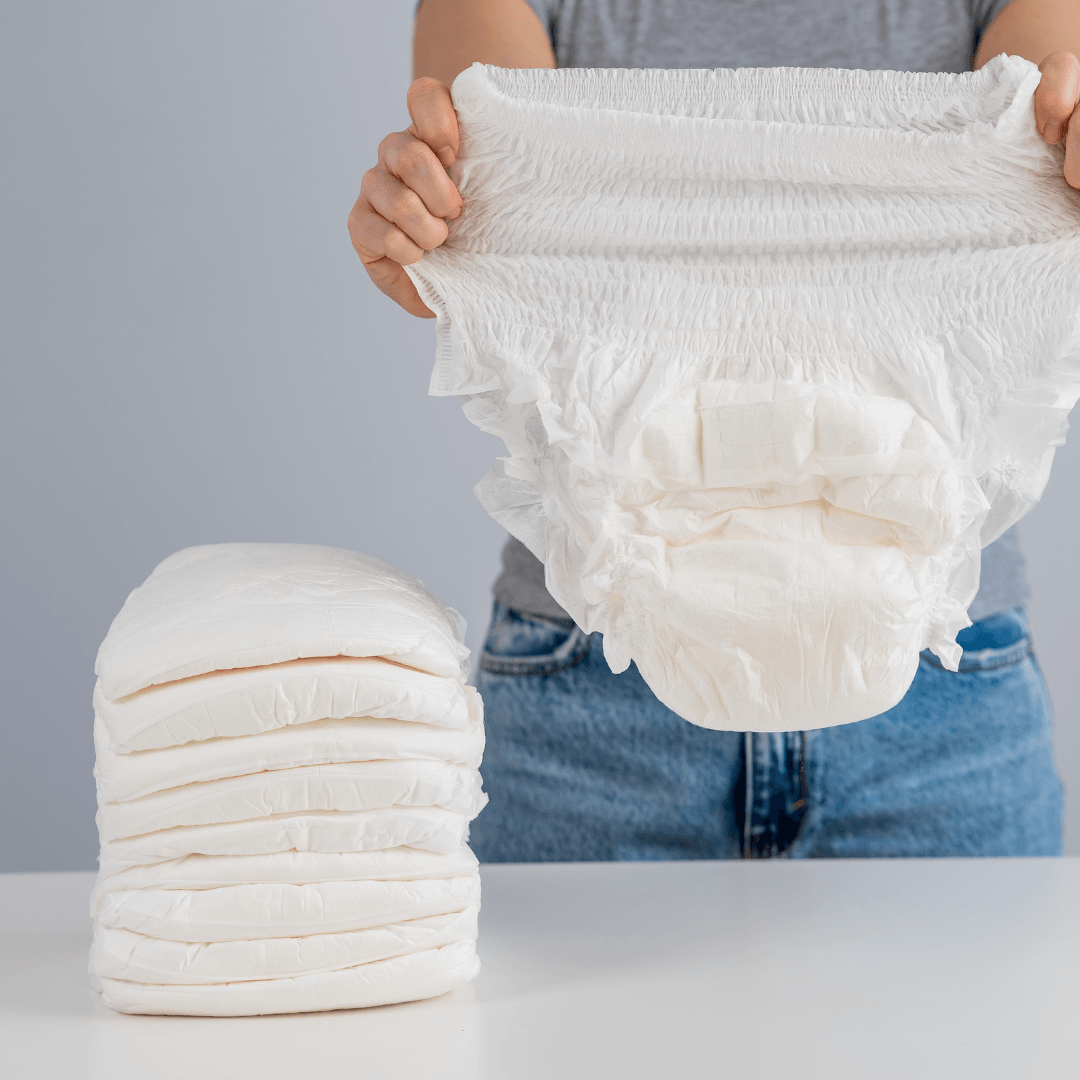
- Step 2: Next, vertically roll up the linen with the brief inside of it and set it aside to use later.
- Step 3: Once your new linens are prepared, undo the soiled brief on your loved one to begin removal. If your loved one needs to be cleaned, using disposable baby wipes is easiest. Be sure to clean your loved one by wiping the mess away from the urethra to avoid infection. Only use one wipe once. Once your loved one is clean, roll up the dirty brief and throw it away.
- Step 4: You are now ready to roll your loved one. Using the proper roll mechanics detailed above, plant your feet firmly on the floor to support your back and roll your loved one to one side. You now will have access to remove the dirty linens below your loved one altogether. Roll these up and throw them away. If your loved one had a bowel movement, you could use this time to clean them. You can also use this time to apply any creams for skin breakdown or complete a wound dressing.
- Step 5: Once your loved one is clean and all dirty linens are removed, vertically wedge the rolled-up clean linen and new brief you set aside (step 2) under the back of your loved one as they are still on their side. Next, guide your loved one back down so that they are laying on top of the new linen. Using the proper log rolling technique above, roll your loved one to the side to unroll your clean linens.
- Step 6: With the new linens beneath them, secure the new brief on your loved one using the ties on each side of the brief (if you are using winged briefs).
- Step 7: Place a pillow underneath one side of your loved one’s lower back to remove the pressure on the tailbone and prevent skin breakdown. Next, place their blanket back on so that they are ready to rest.
Managing Incontinence if Your Loved One Is Bed-Bound
If your loved one has limited mobility but is able to communicate with you when they are able to relieve themselves, knowing how to change a bedpan can save you and your loved much time and energy.
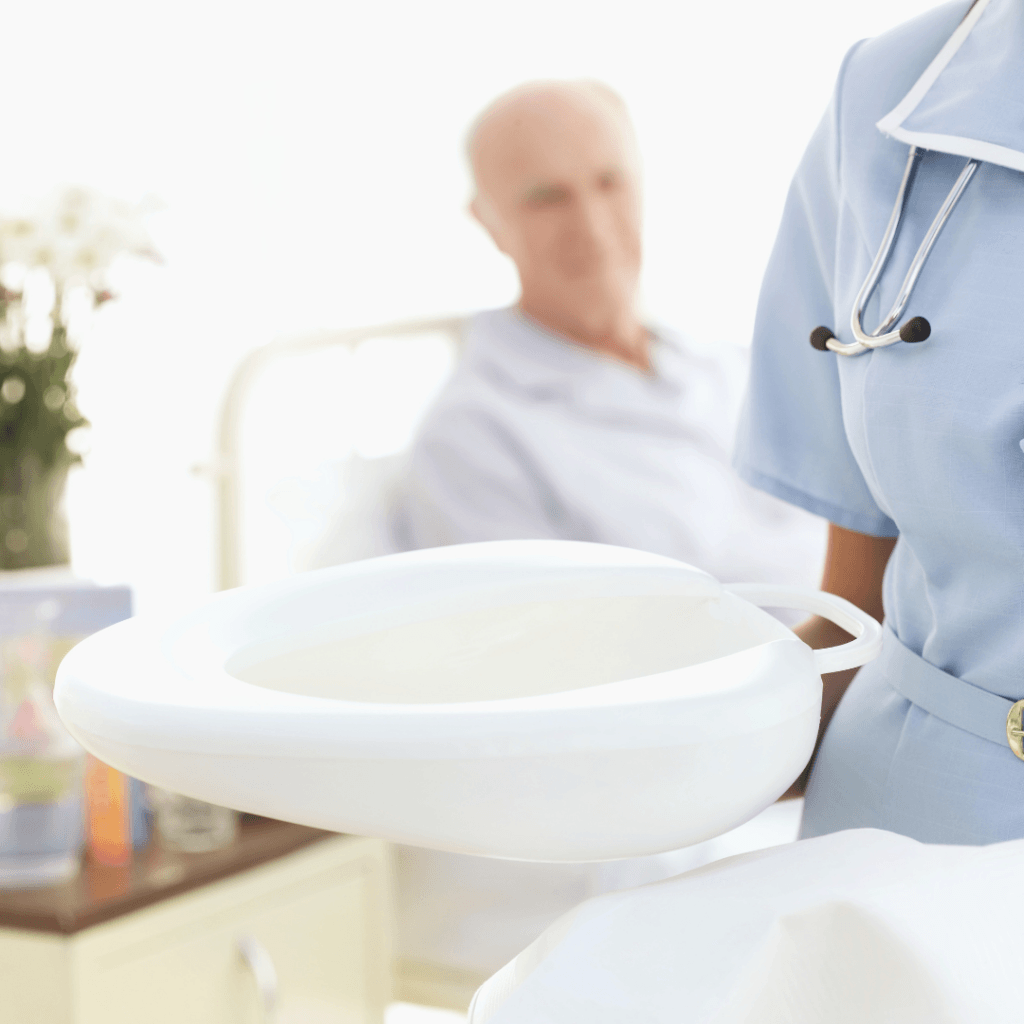
In addition to bedpans, urinals are also good options. Urinals are available for both males and females and may provide more accessible options for your loved one to urinate.
Bedpans are typically used for a bowel movement, while a urinal may be used for a loved one that is unable to get out of bed but can communicate with you when they need to relieve themselves.
If your loved one has limited mobility or they are not able to communicate when they need to relieve themselves, a bedpan and a urinal will not be good options to use for them. Instead, a brief and linen are best.
How to use a bedpan:
- Step 1: Using the proper mechanics of the log roll technique illustrated above, roll your loved one to one side and place the bedpan underneath them with the flat side on their tailbone.
- Step 2: Once they are done using the bedpan, gently log roll your loved to the side again and remove the bedpan for cleaning.
What is PureWick?
The PureWick system is a new incontinence management option for females and males. PureWick is an absorbent device that guides urinary flow to a suction canister via a plastic tube. It is placed over the female genitalia, helping to eliminate fluids from incontinence. PureWick is available via insurance and is best used for female patients.
What is a condom catheter?
A condom catheter is an option for males with urinary incontinence. It is a plastic device that is placed over the genitalia and connects to a tube with a leg bag to drain the urine. The condom catheter has a sticky surface that helps it to stay in place. It is one of the best options for males with urinary incontinence.
Related Links:
- Pacific Brain Tumor Center | 310-582-7450
- Supportive Care Clinic
- Brain Tumor Treatment Locations
- Brain Tumor Resources
Videos for Care Partners
 Care Partner Series: Incontinence Management | Mariah Mahotz, BSN, RN, OCN
This is part of a series of “How To” videos for our families, specifically focused on care partners. Incontinence Management is one of the most requested pieces of information for…
Care Partner Series: Incontinence Management | Mariah Mahotz, BSN, RN, OCN
This is part of a series of “How To” videos for our families, specifically focused on care partners. Incontinence Management is one of the most requested pieces of information for…
 Care Partner Series: Preventing Falls | Corwin Patis, PT, DPT
This is part of a series of “How To” videos for our families, specifically focused on care partners. Preventing falls becomes a significant issue with our patients as they go…
Care Partner Series: Preventing Falls | Corwin Patis, PT, DPT
This is part of a series of “How To” videos for our families, specifically focused on care partners. Preventing falls becomes a significant issue with our patients as they go…
 Care Partner Series: Managing Seizures | Emmaline Mauritson, MPAP, PA-C
This is part of a series of “How To” videos for our families, specifically focused on care partners. If you are caring for a loved one who has brain tumor,…
Care Partner Series: Managing Seizures | Emmaline Mauritson, MPAP, PA-C
This is part of a series of “How To” videos for our families, specifically focused on care partners. If you are caring for a loved one who has brain tumor,…
 Care Partner Series: What is Meditation? | Sujata Dube, MA
This is part of a series of “How To” videos for our families, specifically focused on care partners. The information presented in “What is Meditation?” however is universal and can…
Care Partner Series: What is Meditation? | Sujata Dube, MA
This is part of a series of “How To” videos for our families, specifically focused on care partners. The information presented in “What is Meditation?” however is universal and can…
 Coping with a Glioblastoma Diagnosis | Dr. Akanksha Sharma & Maria Quiban Whitesell
There are few cancers more challenging than glioblastomas. While there is currently no cure for these brain tumors, patients and their caregivers can take steps to maximize their quality of…
Coping with a Glioblastoma Diagnosis | Dr. Akanksha Sharma & Maria Quiban Whitesell
There are few cancers more challenging than glioblastomas. While there is currently no cure for these brain tumors, patients and their caregivers can take steps to maximize their quality of…
 The Question We Dread (ft. Dr. Akanksha Sharma) | Cancer Support Community Los Angeles
In this installment of the Educational Workshop Series by Cancer Support Community Los Angeles, Dr. Akanksha Sharma, MD, presents “The Question We Dread: The Answer We Need.” Dr. Sharma is…
The Question We Dread (ft. Dr. Akanksha Sharma) | Cancer Support Community Los Angeles
In this installment of the Educational Workshop Series by Cancer Support Community Los Angeles, Dr. Akanksha Sharma, MD, presents “The Question We Dread: The Answer We Need.” Dr. Sharma is…
 Brain Tumor Webinar: Living with Optune (Tumor Treating Fields) for Glioblastoma
Guest Speaker Janice discusses what is it like to live with Optune (Tumor Treating Fields) for glioblastoma. The webinar was hosted by Akanksha Sharma, MD, Neuro-oncologist at the Pacific Brain…
Brain Tumor Webinar: Living with Optune (Tumor Treating Fields) for Glioblastoma
Guest Speaker Janice discusses what is it like to live with Optune (Tumor Treating Fields) for glioblastoma. The webinar was hosted by Akanksha Sharma, MD, Neuro-oncologist at the Pacific Brain…
 A PNI Minute with Dr. Akanksha Sharma | What is Palliative Care?
Dr. Akanksha Sharma is a neuro-oncologist and palliative medicine specialist at the Pacific Brain Tumor Center at Pacific Neuroscience Institute in Santa Monica, CA. To provide extra resources to brain…
A PNI Minute with Dr. Akanksha Sharma | What is Palliative Care?
Dr. Akanksha Sharma is a neuro-oncologist and palliative medicine specialist at the Pacific Brain Tumor Center at Pacific Neuroscience Institute in Santa Monica, CA. To provide extra resources to brain…
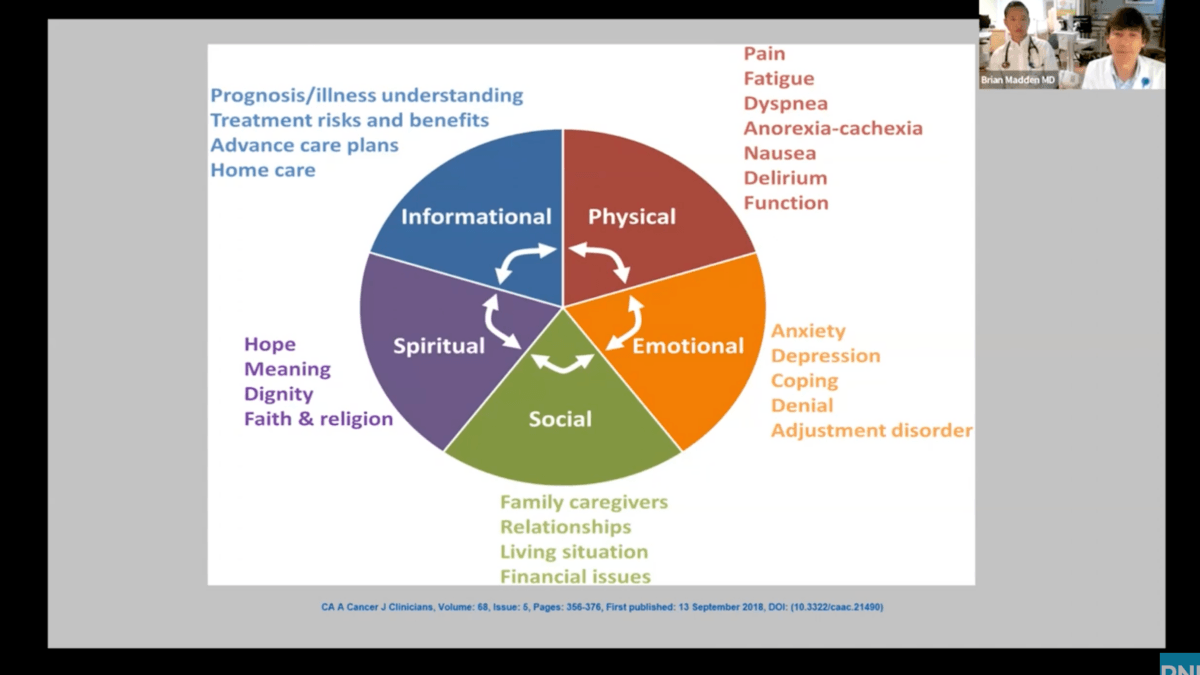 Brain Tumor Webinar: What To Expect From Palliative and Supportive Care
Pacific Neuroscience Institute hosted guest speakers Brian D. Madden, MD, and Andre J. Yu, MD, at Providence Saint John’s Health Center to discuss what to expect if you have been…
Brain Tumor Webinar: What To Expect From Palliative and Supportive Care
Pacific Neuroscience Institute hosted guest speakers Brian D. Madden, MD, and Andre J. Yu, MD, at Providence Saint John’s Health Center to discuss what to expect if you have been…
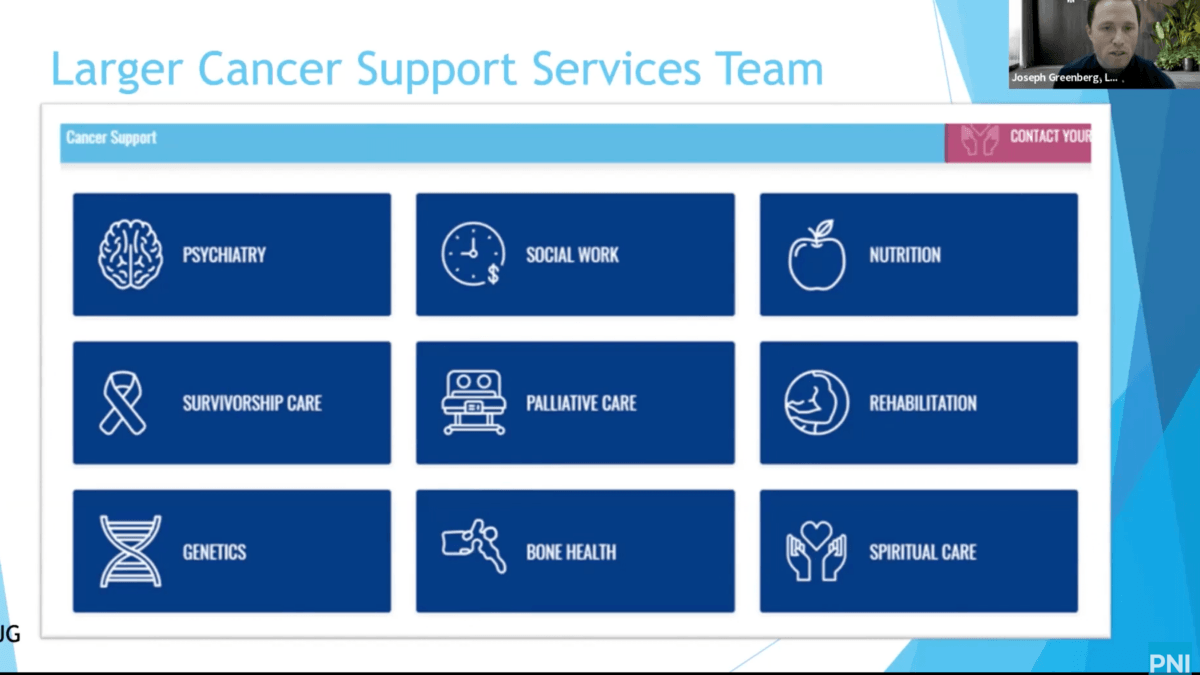 Brain Tumor Webinar: Frequently Used Resources in Cancer
Joseph Greenberg, MSW, LCSW, OSW-c, and Caroline Sarafin, licensed clinical social workers at Providence Saint John’s Health Center, explain frequently used resources in cancer. May is Brain Tumor Awareness Month.…
Brain Tumor Webinar: Frequently Used Resources in Cancer
Joseph Greenberg, MSW, LCSW, OSW-c, and Caroline Sarafin, licensed clinical social workers at Providence Saint John’s Health Center, explain frequently used resources in cancer. May is Brain Tumor Awareness Month.…
 Brain Tumor Webinar: Optimizing Wellness for Brain Tumors
Guest speaker L.J. Amaral MS, RD, CSO, Clinical Nutrition Coordinator at Cedars Sinai, discusses how to optimize wellness for brain tumors using nutrition and exercise. May is Brain Tumor Awareness…
Brain Tumor Webinar: Optimizing Wellness for Brain Tumors
Guest speaker L.J. Amaral MS, RD, CSO, Clinical Nutrition Coordinator at Cedars Sinai, discusses how to optimize wellness for brain tumors using nutrition and exercise. May is Brain Tumor Awareness…
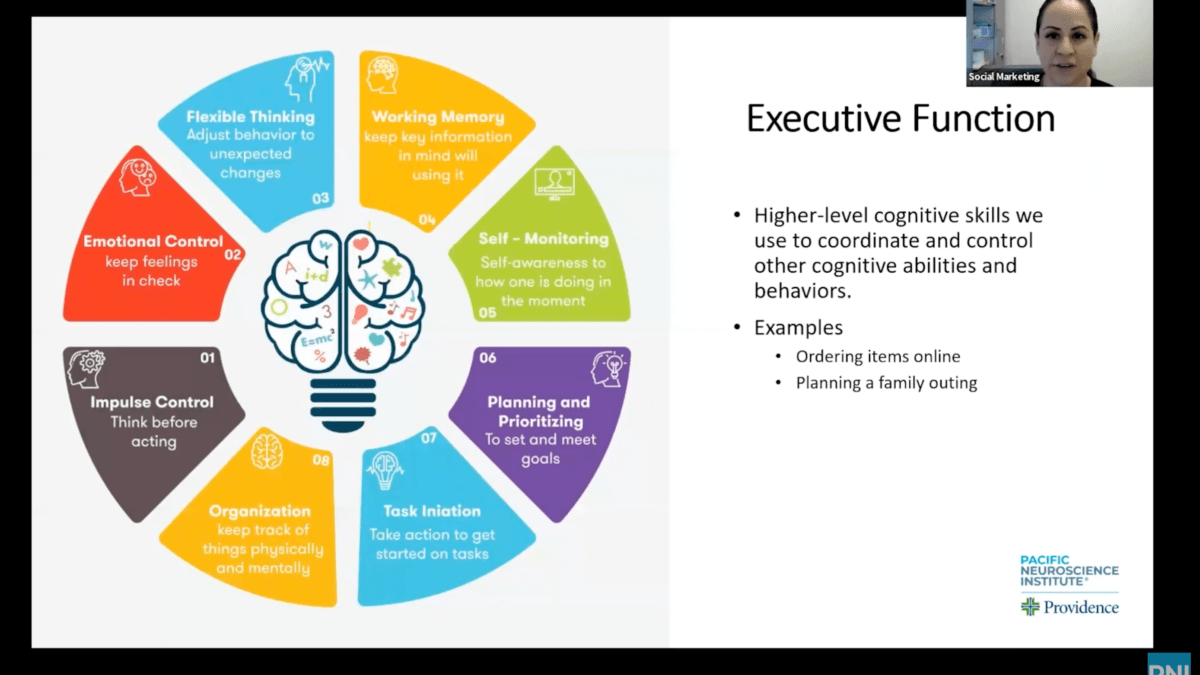 Brain Tumor Webinar: Cognitive Changes in Patients With Brain Tumors
Romina Huerta, MS, CCC-SLP, Speech-Language Pathologist at Pacific Neuroscience Institute, discusses cognitive changes in patients with brain tumors. May is Brain Tumor Awareness Month. We “Go Gray in May” and…
Brain Tumor Webinar: Cognitive Changes in Patients With Brain Tumors
Romina Huerta, MS, CCC-SLP, Speech-Language Pathologist at Pacific Neuroscience Institute, discusses cognitive changes in patients with brain tumors. May is Brain Tumor Awareness Month. We “Go Gray in May” and…
 Brain Tumor Webinar: Ask Anything – Neurosurgery, Radiation Oncology and Medical Oncology
Pacific Neuroscience Institute’s Brain Tumor Center experts Garni Barkhoudarian, MD, Neurosurgeon, and Robert Wollman, MD, Radiation Oncologist, answer questions about neurosurgery, radiation oncology, and medical oncology, and their role in…
Brain Tumor Webinar: Ask Anything – Neurosurgery, Radiation Oncology and Medical Oncology
Pacific Neuroscience Institute’s Brain Tumor Center experts Garni Barkhoudarian, MD, Neurosurgeon, and Robert Wollman, MD, Radiation Oncologist, answer questions about neurosurgery, radiation oncology, and medical oncology, and their role in…
 Brain Tumor Webinar: Acupuncture & Integrative Medicine – Support System for Brain Tumor Treatment
Pacific Neuroscience Institute hosted guest speaker Lucy Postolov, Doctor of Acupuncture and Chinese Medicine, DACM, L.Ac., to discuss acupuncture and integrative medicine as a support system for brain tumor treatment.…
Brain Tumor Webinar: Acupuncture & Integrative Medicine – Support System for Brain Tumor Treatment
Pacific Neuroscience Institute hosted guest speaker Lucy Postolov, Doctor of Acupuncture and Chinese Medicine, DACM, L.Ac., to discuss acupuncture and integrative medicine as a support system for brain tumor treatment.…

Care Partner Series: Incontinence Management | Mariah Mahotz, BSN, RN, OCN

Care Partner Series: Preventing Falls | Corwin Patis, PT, DPT

Care Partner Series: Managing Seizures | Emmaline Mauritson, MPAP, PA-C

Care Partner Series: What is Meditation? | Sujata Dube, MA

Coping with a Glioblastoma Diagnosis | Dr. Akanksha Sharma & Maria Quiban Whitesell

The Question We Dread with Dr. Akanksha Sharma

Brain Tumor Webinar: Living with Optune (Tumor Treating Fields) for Glioblastoma

A PNI Minute with Dr. Akanksha Sharma | What is Palliative Care?
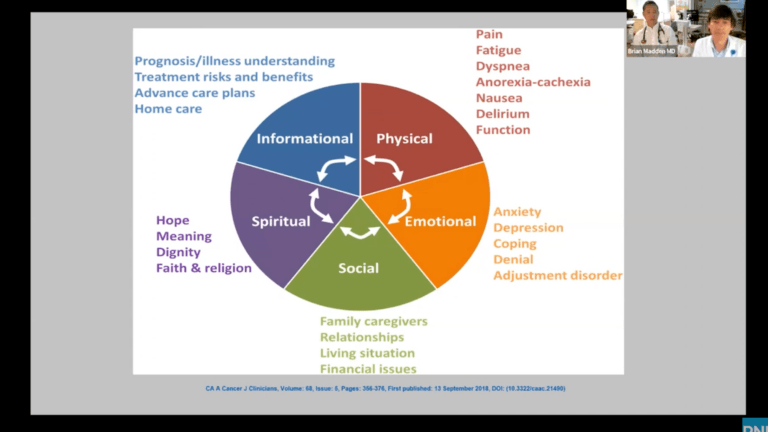
Brain Tumor Webinar: What To Expect From Palliative and Supportive Care
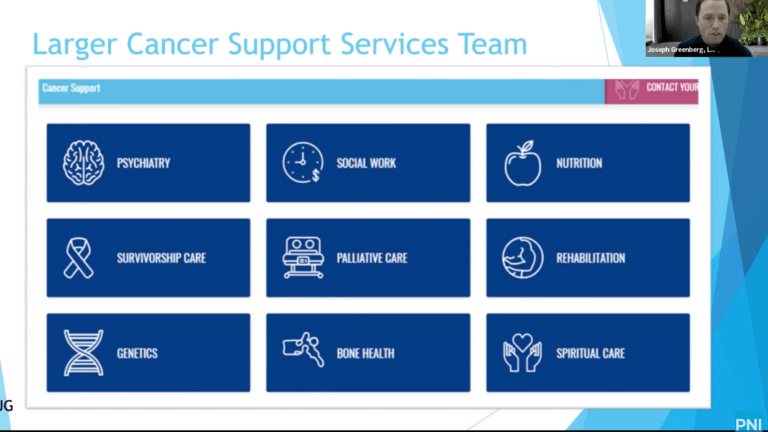
Brain Tumor Webinar: Frequently Used Resources in Cancer

Brain Tumor Webinar: Optimizing Wellness for Brain Tumors
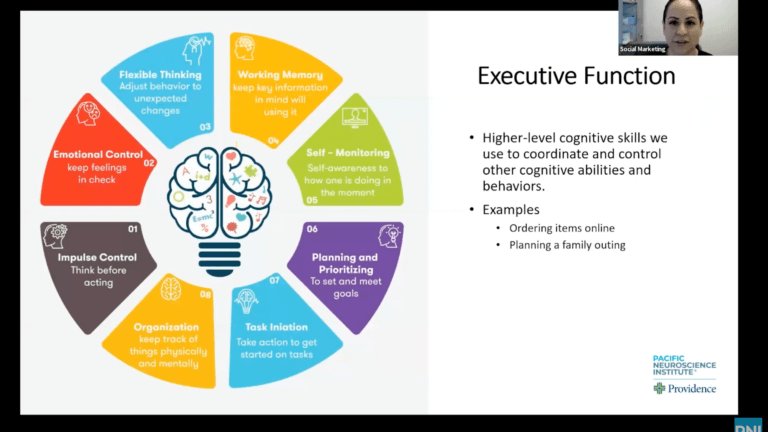
Brain Tumor Webinar: Cognitive Changes in Patients With Brain Tumors

Brain Tumor Webinar: Ask Anything – Neurosurgery, Radiation Oncology and Medical Oncology

Brain Tumor Webinar: Acupuncture & Integrative Medicine – Support System for Brain Tumor Treatment
Related Articles About Brain Tumor
Last updated: July 5th, 2023



